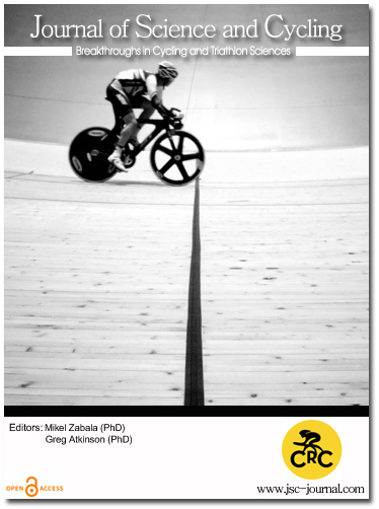Estimation of Handgrip Position Based on Force Measurement During Steady Pedaling
Abstract
There have been many studies on pedaling skills (Bini et al., 2013) to improve cycling efficiency. Riding position of upper body as well as leg motion is very important for cycling because it has a substantial impact on air resistance and physical fatigue (Burke & Pruitt, 2003). Although camera-based motion capture systems are the most popular solution to measure riders’ position during cycling, they limit the range of motion and cannot be applied to actual outdoor cycling.
In this study, we aim for developing a bike--mountable position estimation system. For this purpose, as a first step, we propose a method for estimation of handgrip position based on the force measurement during steady pedaling. Wattbike Trainer (Wattbike Ltd.) was used for our prototype system. A 6--‐axis force/torque Sensor (BFS067XS102EU6S, Leptrino) was installed at an ahead-‐stem to measure the forces and torques loaded on the handlebar. According to the preliminary experiments, three parameters–????! , ????! ,!–were chosen for the estimation. The proposed system classifies the observed data into three classes corresponding to the positions of handgrip, such as drops, hoods, and tops (Fig. 1) based on the SVM (Support Vector Machine) (Cortes & Vapnik, 1995), which is one of the most powerful machine learning techniques
Experiments were conducted to verify the effectiveness of the proposed method. Four amateur male cyclists (mean 45.5 years old) participated in the experiments. The experiments consist of two phases, such as a learning phase and a test phase. To construct an SVM classifier, 60 seconds learning data for each handgrip position was collected at 100Hz for each participant in the learning phase. In the test phase, participants changed their handgrip positions every 30 seconds and steadily pedaled 6 minutes in total. Based on the individually learned SVM classifier, the system estimated the handgrip position at each sampling time. In both phases, the pedaling load and cadence were set according to each participant’s preference. Table 1 shows a confusion matrix of the experimental results. The proposed method achieves both high precision and recall. According to the experimental results, the proposed method can estimate the handgrip position with high reliability during steady pedaling.
For future works, we will apply our system and estimation method to normal road bikes and develop a method to estimate positions of cyclists’ upper body.
Downloads
Published
How to Cite
Issue
Section
Copyright (c) 2015 Journal of Science and Cycling

This work is licensed under a Creative Commons Attribution-NonCommercial 4.0 International License.
Authors contributing to Journal of Science and Cycling agree to publish their articles under a Creative Commons CC BY-NC-ND license, allowing third parties to copy and redistribute the material in any medium or format, and to remix, transform, and build upon the material, for any purpose, even commercially, under the condition that appropriate credit is given, that a link to the license is provided, and that you indicate if changes were made. You may do so in any reasonable manner, but not in any way that suggests the licensor endorses you or your use.
Authors retain copyright of their work, with first publication rights granted to Cycling Research Center.






